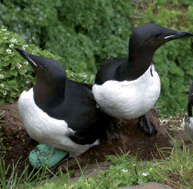Geographic differences in organic contaminants and stable isotopes (δ13C, δ15N) in thick-billed murre (Uria lomvia) eggs from Alaska†
Abstract
The contents from thick-billed murre (Uria lomvia) eggs collected at four Alaskan colonies in 2002 were analyzed for organic contaminants and carbon (δ13C) and


 Please wait while we load your content...
Please wait while we load your content...